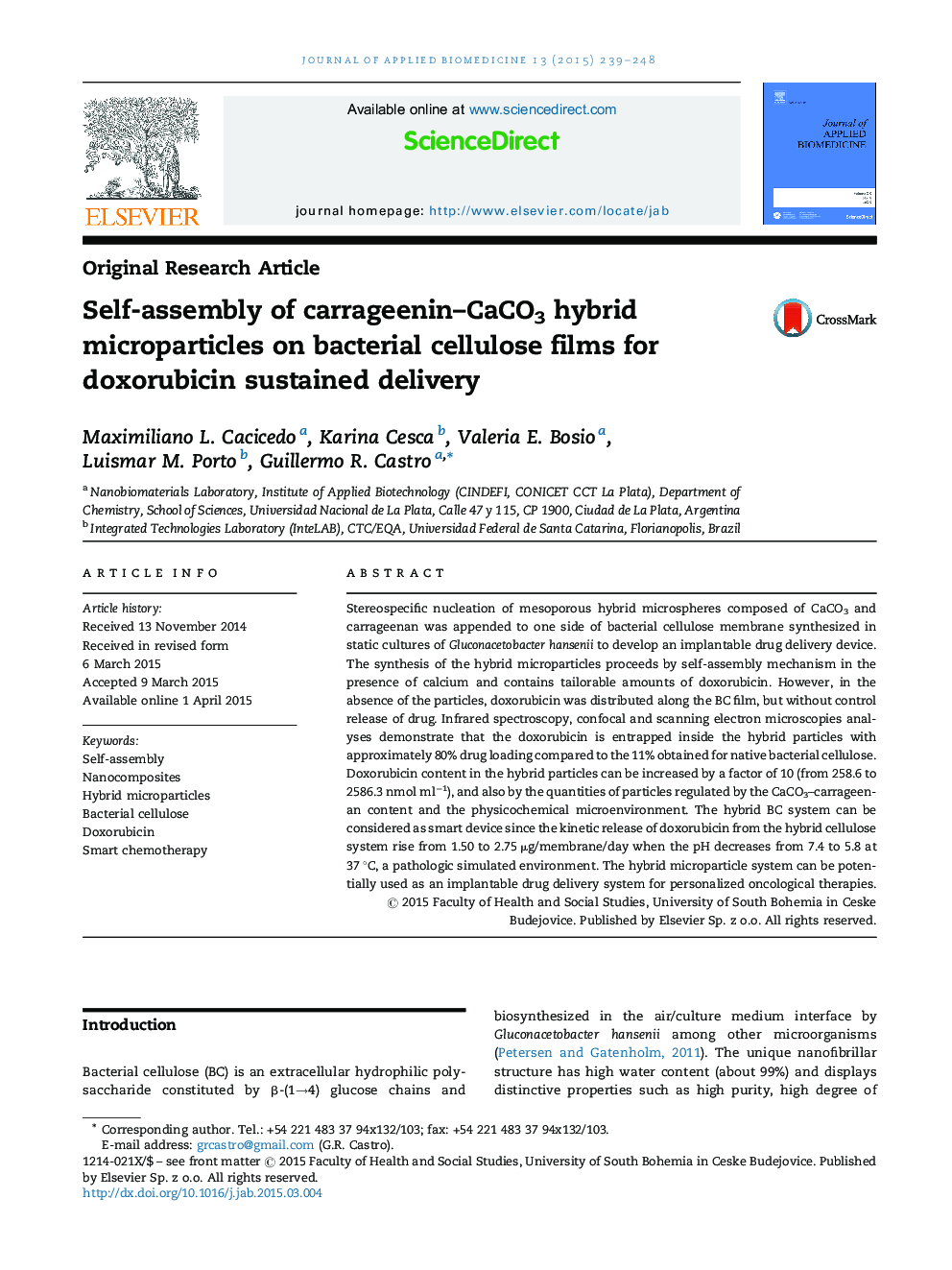| کد مقاله | کد نشریه | سال انتشار | مقاله انگلیسی | نسخه تمام متن |
|---|---|---|---|---|
| 2087593 | 1080672 | 2015 | 10 صفحه PDF | دانلود رایگان |

• Bacterial cellulose films were tailored using carragenin/CaCO3 microparticles.
• Hybrid microparticles were self-assembled in one side on bacterial cellulose film.
• The carragenin/CaCO3 hybrid microparticles are able to be loaded with doxorubicin.
• The system could be used for sustained chemotherapy at least for 1 year.
• Doxorubicin loading can be modulated and release made under pathological states.
Stereospecific nucleation of mesoporous hybrid microspheres composed of CaCO3 and carrageenan was appended to one side of bacterial cellulose membrane synthesized in static cultures of Gluconacetobacter hansenii to develop an implantable drug delivery device. The synthesis of the hybrid microparticles proceeds by self-assembly mechanism in the presence of calcium and contains tailorable amounts of doxorubicin. However, in the absence of the particles, doxorubicin was distributed along the BC film, but without control release of drug. Infrared spectroscopy, confocal and scanning electron microscopies analyses demonstrate that the doxorubicin is entrapped inside the hybrid particles with approximately 80% drug loading compared to the 11% obtained for native bacterial cellulose. Doxorubicin content in the hybrid particles can be increased by a factor of 10 (from 258.6 to 2586.3 nmol ml−1), and also by the quantities of particles regulated by the CaCO3–carrageenan content and the physicochemical microenvironment. The hybrid BC system can be considered as smart device since the kinetic release of doxorubicin from the hybrid cellulose system rise from 1.50 to 2.75 μg/membrane/day when the pH decreases from 7.4 to 5.8 at 37 °C, a pathologic simulated environment. The hybrid microparticle system can be potentially used as an implantable drug delivery system for personalized oncological therapies.
Figure optionsDownload as PowerPoint slide
Journal: Journal of Applied Biomedicine - Volume 13, Issue 3, July 2015, Pages 239–248